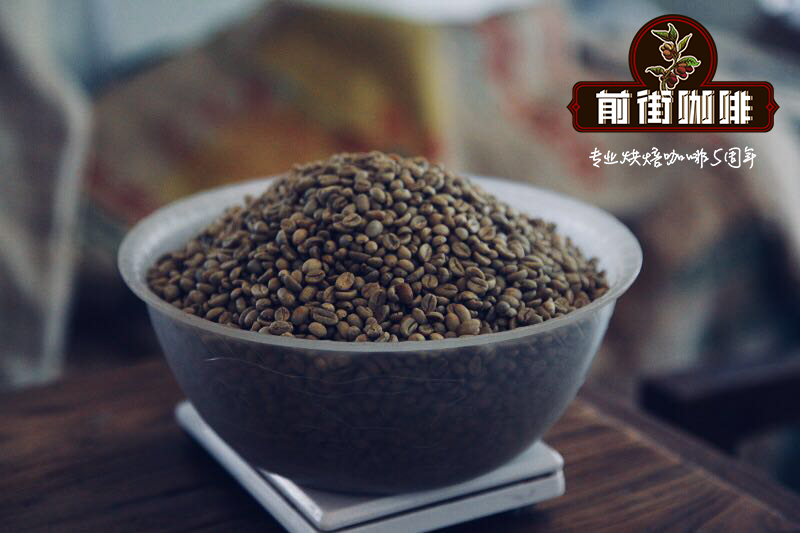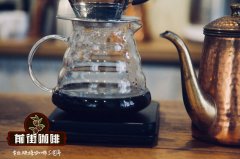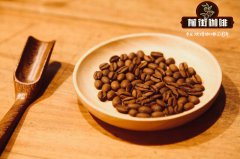What do you recommend for Ethiopian coffee? Characteristics of coffee beans in Ethiopia

Professional coffee knowledge exchange more coffee bean information please follow the coffee workshop (Wechat official account cafe_style)
The descendants of ● King Solomon and Queen Sheba
Ethiopians claim to be descendants of King Solomon and Queen Sheba, and the lion is the symbol of power in their country. The country's population reached 102403196 in 2016 (12th in the world), making it the most populous landlocked country in the world; it is also one of the few African countries that have not been colonized. Coffee is not only the most important crop in the country, but also the main source of foreign exchange, which is equivalent to the country's currency. 1% of the population lives on coffee, making it one of the five largest coffee producing areas in the world.
Located in the south of the Tropic of Cancer (latitude 5 to 15), close to the equator, it belongs to tropical and subtropical climate patterns. Most areas are located between 1500m and 2400m above sea level, with average rainfall of 500--1500ML, making it the highest-lying country in Africa. The coffee produced has a unique fruit aroma and sour taste, strong and mild flavor, so that many people are fascinated by his strong flavor.
Origin of ● Coffee Ethiopia
According to legend, coffee is a mysterious red fruit found by a shepherd named KALDI while herding sheep in the forests of the Ethiopian plateau. Local monks spend the religious ritual of staying up all night by eating coffee fruit; it was later passed on by Arabs and became popular all over the world.
● KAFFA BUNA
Ethiopia can be said to be the hometown of coffee, where the red coffee fruit is called "KAFFA BUNA". At present, there are still many wild native species of coffee in the forest of KAFFA, which is an important coffee gene bank in the world. The main mode of cultivation is rural coffee, so coffee trees are often seen symbiotic with other tree crops around the homes of small farmers.
Blessed coffee from ●
For hundreds of years, coffee has been the main drink in Chinese life, and has formed a coffee-sharing ceremony to entertain guests and show welcome and respect. In this ceremony, everyone has to accept the invitation of three cups to drink, because one, two and three represent ABOLE-BERKE-SUSTGA, especially the third cup represents the blessings given and is the cup to be blessed.
● Essel coffee beans
In the early days, coffee beans produced in Ethiopia were mainly treated by the earth and had more miscellaneous flavors, so water washing treatment was introduced around 1970, adding a clean and pure flavor layer. however, with the pursuit of unique flavor of boutique coffee and the improvement of sun shelf technology, the proportion of sun and water washing now accounts for about half. The growing pattern of coffee is mainly small farmers, and most of them are sold by cooperatives. In recent years, the rise of boutique coffee has gradually increased the single farm system (SINGLE FARM PROJECT, referred to as SFP), bringing new opportunities for transformation to the industry, and people will look forward to it in the future.
The more well-known producing areas are Sidamo SIDAMO, Yegashev YIRGACHEFFE, Cochel KOCHERE, Hara Harar and Jima DJIMMA.
● Yegashev, Ethiopia. ETHIOPIA YIRGACHEFFE
When it comes to Ethiopian coffee, Yegashev is the most familiar, because of its unique flower aroma and obvious sweet and sour fruit flavor, Yegashev became independent from the SIDAMO producing area of Sidamo in 1995. Officially known as "Yegashev", it covers the producing areas of Vanago WANAGO, Yegashev YIRGACHEFFE, Kochel KOCHERE, Jinrina Ambaya GELENA ABAYA, etc., and the coffee produced in these areas is collectively called Yegashev.
And 'Yegashev' is a synonym for "flavor" and stands for "Yegashev coffee flavor", so in ECX's trading system, coffee beans in Yegashev producing areas are divided into ECXA: Yegashev coffee beans ECXB: coffee beans without Yegashev flavor, so even if you buy Yegashev coffee, it doesn't mean it has Yegashev flavor. It also depends on whether the cup has "Yegashev coffee flavor", while Qianjie Coffee introduces G1 grade boutique coffee beans with unique Yegashev flavor, which is worth savoring carefully:
Ethiopia Yegashev Edido G1 (washing) ETHIOPIA WASHED YIRGACHEFFE ARICHA-EDIDO-GRADE 1
Ethiopia Yegashev Vanago G1 (Solar) ETHIOPIA NATURAL YIRGACHEFFE WANAGO-GRADE 1
Ethiopia Sidamo chirp processing Plant G1 (Solar) ETHIOPIA NATURAL SIDAMO CHUCHU- SOLOMON GETU-GRADE 1
● grading system for Ethiopian Coffee
In the early Ethiopian coffee grading system, only water-washed beans had the grade of G1--G2, and the grade of sun-dried beans began with G3. However, with the development of the sun-drying method and the market demand for grading of fine sun-dried beans, after the implementation of the ECX trading system, both sun-washed beans and sun-washed beans had the grade of G1--G5. However, because the higher the level, the higher the export tax, so many traders still adopt the traditional grading method in order to avoid it.
In addition to the familiar G1--G5 rating, ECX will also grade G1--G3 coffee beans in SCAA cups, and then divide the coffee beans into the highest grade Q1 and the second highest grade Q2 level II (SPECIALTY COFFEE).
The establishment of the classification system is mainly used to distinguish the proportion of defective beans, and can not judge whether the flavor is good or bad, and the evaluation of the main flavor still needs to be measured through the cup flavor spectrum; the care of defective beans removal will also affect the flavor of a cup of coffee.
What is the ECX transaction system of ●
ECX's full name is ETHIOPIAN COMMODITIES EXCHANGE, the Ethiopian Commodity Exchange. Simplify the supply chain of local agricultural products through the government mechanism to ensure that buyers and sellers can be protected and make their products internationalized and transparent, so that farmers can have reasonable selling prices without being subjected to multiple levels of exploitation.
This is of positive help to most agricultural and coffee farmers, but for the third wave of boutique coffee, which emphasizes traceability and unique flavor, it is impossible to grasp the origin of this collective sales classification method. Therefore, many cooperatives or single farms will bypass ECX and adopt their own sales method to enhance the flavor of other producing areas. This will be a new trend in the future.
● 's anticipated Coffee Wave
Ethiopian coffee can be said to be a must for coffee, in the future boutique coffee wave, more style producing areas will appear, it will be expected!
● Essel Coffee Bean brand recommendation
Qianjie Coffee freshly roasted single Essel beans-such as Yega Sheffield and Sidamo Coffee are fully guaranteed in brand and quality and are suitable for brewing in a variety of utensils. And more importantly, the performance-to-price ratio is extremely high, a bag of half a pound 227 grams, the price is only 70-90 yuan. According to 200ml of each cup of coffee and the ratio of powder to water at 1:15, 15 cups of fine coffee can be made in a bag, and each cup of coffee costs only 5 or 6 yuan.
Related recommendation: flavor characteristics of Ethiopian coffee producing area _ Ethiopian Yega Xuefei boutique coffee
Important Notice :
前街咖啡 FrontStreet Coffee has moved to new addredd:
FrontStreet Coffee Address: 315,Donghua East Road,GuangZhou
Tel:020 38364473
- Prev

Ethiopian coffee unpopular knowledge Ethiopian coffee culture
Professional coffee knowledge exchange more coffee bean information please follow the coffee workshop (Wechat official account cafe_style) Ethiopia is known as the birthplace of coffee, it is a local custom, no matter how poor people's homes, they must have a coffee pot and a charcoal stove, why? Because coffee is something that local people think they have to make every day.
- Next

Comparison of characteristics and taste of Ethiopian coffee beans how to drink Ethiopian coffee beans
Professional coffee knowledge exchange more coffee bean information please pay attention to the coffee workshop (Wechat official account cafe_style) Essex coffee beans in the large particles and small particles in the flavor difference? In order to verify this problem, the editor decided to pick two sets directly and compare them. Take the washing of Sidamo G1 as an example, the coffee beans with obvious differences in size are selected and the same cooking parameters are used.
Related
- Detailed explanation of Jadeite planting Land in Panamanian Jadeite Manor introduction to the grading system of Jadeite competitive bidding, Red bid, Green bid and Rose Summer
- Story of Coffee planting in Brenka region of Costa Rica Stonehenge Manor anaerobic heavy honey treatment of flavor mouth
- What's on the barrel of Blue Mountain Coffee beans?
- Can American coffee also pull flowers? How to use hot American style to pull out a good-looking pattern?
- Can you make a cold extract with coffee beans? What is the right proportion for cold-extracted coffee formula?
- Indonesian PWN Gold Mandrine Coffee Origin Features Flavor How to Chong? Mandolin coffee is American.
- A brief introduction to the flavor characteristics of Brazilian yellow bourbon coffee beans
- What is the effect of different water quality on the flavor of cold-extracted coffee? What kind of water is best for brewing coffee?
- Why do you think of Rose Summer whenever you mention Panamanian coffee?
- Introduction to the characteristics of authentic blue mountain coffee bean producing areas? What is the CIB Coffee Authority in Jamaica?

